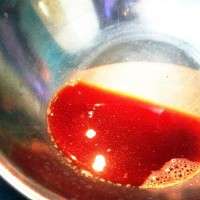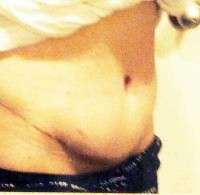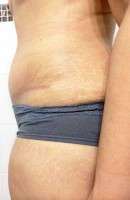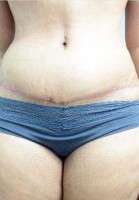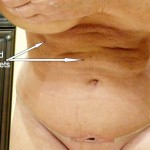Tummy tuck seroma
Seroma formation is a common problem following tummy tuck surgery. In an effort to minimize this complication, surgeons utilize drains in the post-operative period. These drains are typically left in place for 7 to 14 days following surgery. They are usually removed when drainage drops below 25cc per 24 hours.
After the tummy tuck drains are removed, tummy tuck seroma fluid can continue to develop for a limited period of time. In most cases, the body resorbs this fluid before it can develop into a seroma.
In some cases, this fluid accumulates faster than the body’s capacity to resorb it. When this occurs, seroma formation can result. This occurs more frequently when patients are physically active.
Once a tummy tuck seroma forms, serial percutaneous aspirations with a needle and syringe are necessary. If this continues, percutaneous CT-guided drain placement may be necessary. In rare cases, placing a sclerosing agent into the seroma cavity may be necessary to prevent seroma formation.
Although most seromas don’t represent a significant problem, they should be removed. Seroma removal helps decrease the potential for infection and wound breakdown. It also makes recovery a more comfortable experience. The vast majority of seromas have resolved in six weeks, but occasionally they persist for longer periods of time. Clinically significant seromas can usually be felt on physical examination, lesser amounts of seroma may be present in most patients, but these do not require treatment. (Richard J. Bruneteau, MD, Omaha Plastic Surgeon)
Seroma after a tummy tuck
Tummy tuck seroma is not a dangerous problem for you. In most cases, the seroma fluid will absorb over time. If the amount left is small, I prefer to allow it to absorb on its own as every time you use a needle to aspirate the fluid, you can cause bleeding.
Having said that, if it is still a larger amount a repeat aspiration is likely worthwhile. (Julio Garcia, MD, Las Vegas Plastic Surgeon)
Yes seromas are not uncommon after tummy tuck and are best treated by repeated aspirations as your surgeon has done. A small seroma of less than ten cc may be difficult to aspirate and will resolve without problems and is not a danger for you. Sometimes ultrasound can be used to find and aspirate an difficult seroma.
If a seroma persists for many months then replacement of a drain or surgical excision of the seroma cavity may be indicated. Stick with you surgeon and he will get you through this. (Richard Linderman, MD, Indianapolis Plastic Surgeon)
Tummy tuck seroma after surgery
Your surgeon did a great job of diagnosis and treatment. Tapping a seroma aggressively is the only way to keep the tissues from contracting and forming a ridge at the scar. Once your tapped volume is around 10 cc your surgeon will be able to stop the process. We are pleased when patients have good results. you will be just fine. (Charles Virden, MD, Reno Plastic Surgeon)
Small seroma is not dangerous after tummy tuck
The body will eventually resorb small seromas after an abdominoplasty. Larger ones benefit from serial aspiration as you surgeon properly did. A small amount of residual fluid is nothing to worry about. (Vincent N. Zubowicz, MD, Atlanta Plastic Surgeon)
Seroma after tummy tuck and liposuction is common, more common with the combination tummy tuck surgery.
Drains are used to remove the fluid and kept till the daily output is 25-30cc for two consecetive days. Then the drains are removed.
Recurrent tummy tuck seroma can be aspirated, but if it continues to accumolate a drain may need to be inserted. The risks of aspiration and tummy tuck drains is infection. (Samir Shureih, MD, Baltimore Plastic Surgeon)
Tummy tuck seroma should resolve although it make take months before all of the fluid is gone. If there is a seroma after abdominoplasty, it often requires 3 to 6 in-office drainages, and compression for 2 months after the last drainage before resolution. The addiction of liposuction to the tummy tuck does increase the risk of seroma formation. (Gary Lawton, MD, San Antonio Plastic Surgeon)
Seroma’s after a tummy tuck can occasionally occur. They are treated with serial aspirations as your surgeon has done. If it recurs another drain may need to be placed or possibly a sclerosing agent or even another surgery to remove any capsule that may have formed.
Continue to follow up with your surgeon so he can determine if any residual seroma needs treatment. If there is not enough fluid to remove with aspirations, any residual fluid will be absorbed by your body over time. (Brian Joseph, MD, Orlando Plastic Surgeon)
Tummy tuck seromas are fairly common. Multiple aspirations or placement of a drain are sometimes needed to treat them successfully. Once the seroma is small enough, your body will re absorb that fluid on its own without further treatment.Re-absorption can occur quickly or slowly depending on age, health and compliance of the individual. Returning to normal or excessive activity after a TT too soon can increase your chances of developing one that is larger than usual.
A wave like motion on your lower abdomen after gently tapping it signifies the presence of a seroma. (Gary M. Horndeski, MD, Texas Plastic Surgeon)
How long do seromas last?
It is possible for seromas to remain forever, although it is most common for small seromas to absorb on their own. Your best option is to see your plastic surgeon in another month to make sure there is no evidence of a residual seroma. It is an easy problem to treat. (David Stoker, MD, Los Angeles Plastic Surgeon)
